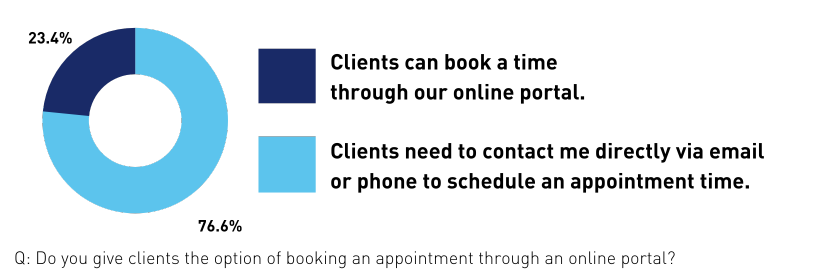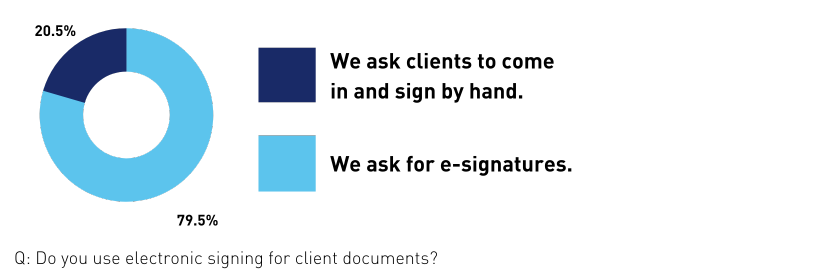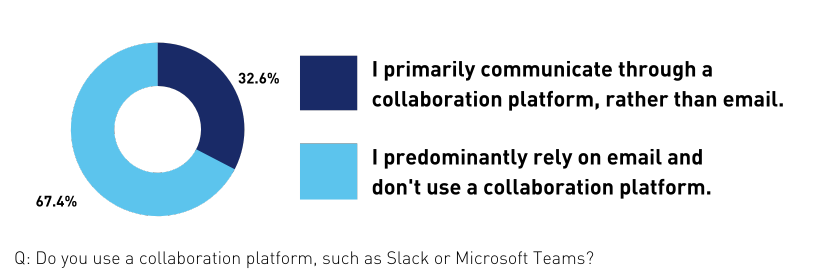ATO governance needs reform: IPA-Deakin SME Research Centre
The IPA-Deakin SME Research Centre has examined the shortcomings of the ATO’s governance model and proposed a Tax...
READ MORE
Only 33% of respondents to the Public Accountant technology quiz use collaboration platforms such as Slack and Microsoft Teams. View all the results and tips to push your digitalisation journey further along.

Chris Hurn, General Manager at Envisage Technology, supports multiple accounting firms. He believes the need for accountants to respond to a rapidly changing regulatory landscape often holds them back from embracing technology to its full potential.
“Accounting isn’t a slow profession. Regulatory frameworks and requirements shift, so just staying on top of those core accounting tasks is challenging,” says Hurn. “Understanding how to then adopt technology in that landscape as well isn’t easy. You often need a dedicated person to manage digital enablement.”
To help IPA members gauge how their technological adoption compares to others in the industry, Public Accountant developed a nine-question quiz last month.
In case you missed it, you can still complete the quiz to compare your results.
We’ve unpacked your quiz responses and asked Hurn to share his top tips for accountants looking to progress their digitalisation.

From Hurn’s observations, many professionals, including accountants, will rarely know about a new piece of technology unless they’ve been searching for a digital tool to fix a particular problem.
He posits this could be why 76.6% of respondents don’t give clients the option of booking a meeting through an online portal. Accountants haven’t experienced problems with their clients booking via phone or email, so they don’t think about the advantages – such as improved productivity, freeing up time and potentially giving clients the opportunity to use a channel they would prefer – that an online booking system could bring.
Hurn shares an example of a time-saving technology that accountants may not be familiar with, despite it being widely available and, possibly, part of the existing software subscriptions of many. Scheduling tools and booking portals such as Microsoft Bookings, he says, allow customers to book appointments and receive automated confirmations and reminders, and to reschedule via self-serve portals.
“Unless you have been reading Microsoft’s updates and releases each month, which I wouldn't expect most accountants to be doing, you probably wouldn’t know that tool exists,” says Hurn. “You wouldn’t be looking at it unless it was a core problem identified internally.”
Staying abreast of new technological tools that could benefit your business requires dedication – assigning accountability for a dedicated resource.
“You could have a partner who does the research to find out about upcoming changes. They could come to you with a rundown of all the new features being added to the digital ecosystem, and ideas on which ones could work well for your company.”

Although the vast majority of respondents – 79.5% – indicated they use e-signing for client documents, Hurn expected this percentage to be up around 90%.
“I can’t remember the last time I dealt with an organisation and wasn’t asked to sign electronically. Nowadays electronic signing is embedded into most platforms.”
E-signatures can be a huge time-saver, enabling accountants and clients to finalise documentation digitally instead of needing to arrange a face-to-face meeting.
For those who recognise the need for a tech solution, assessing even a small segment of the hundreds of search results for ‘e-signatures’ against the business’s needs may be a big time investment.
Hurn suggests that the person assessing the different e-signature tools needs to understand what you want to sign, which system it’s coming from and where you need to record the signature back into. This information helps them make an effective choice.
It may be useful to work with an internal business analyst.
“They should understand your internal processes and problems before even thinking about digitalisation,” Hurn says.
“Once they’ve developed that understanding they can find applications that are best suited to your business’s requirements.”

Only 32.6% of respondents said they rely on a collaboration platform, such as Slack or Microsoft Teams, to communicate internally.
And Hurn believes the percentage of respondents getting value out of collaboration platforms is likely to be much lower.
“Most people probably use the chat function internally, but that might be solely for synchronous chat,” says Hurn.
Collaboration platforms’ greater value is enabling asynchronous communication, however – communication between people and teams who are not all participating in the conversation at the same time.
“It’s important to know how to make the most of different mechanisms within the platform to enable effective communication.”
Embedding asynchronous work practices and the tools that enable them are an important step towards the sort of flexibility that can support four-day working weeks, flexible hours and value-based rather than time-based billing.
“It’s not just about how to use the tool, but it’s embracing a whole cultural shift,” Hurn says.

Word-of-mouth client referrals far outweigh social media and marketing automation tools as the preferred method for accountants to reach prospective clients.
“I’m not surprised that 69% of respondents said they rely on word-of-mouth referrals,” says Hurn.
“It’s possible to build quite a large firm just through your initial network and then work to expand that network.”
Digital tools can also be used to increase word-of-mouth referrals – primarily through maintaining a comprehensive and up-to-date CRM.
“This helps you to understand your network and how your contacts might interact with each other,” Hurn says of CRM – which does require a time investment in making sure data is accurate and updated. “A solid CRM can be a really powerful mode of network management.”
He also suggests ensuring that your connections understand the value you can bring to businesses so that you’re top of mind should a referral opportunity arise, and adding a note encouraging referrals to your email signature.
“There are centralised signature management tools that could allow you to run a campaign through a particular period each year,” Hurn suggests. “Digital tools can really help here.”
Our monthly quizzes help accounting professionals explore opportunities for process and technology improvements that could help grow their businesses. You still have time to benchmark your readiness to use chatbots in our June quiz.